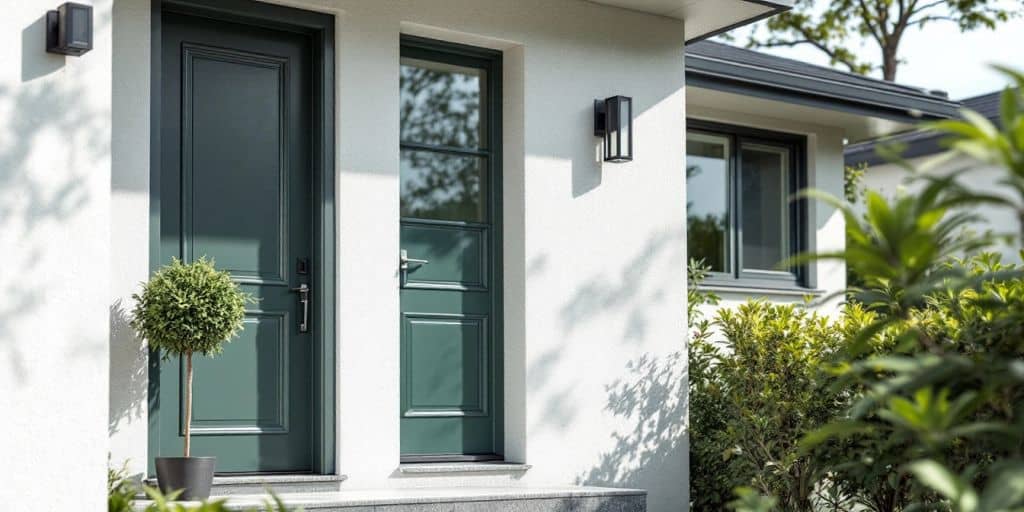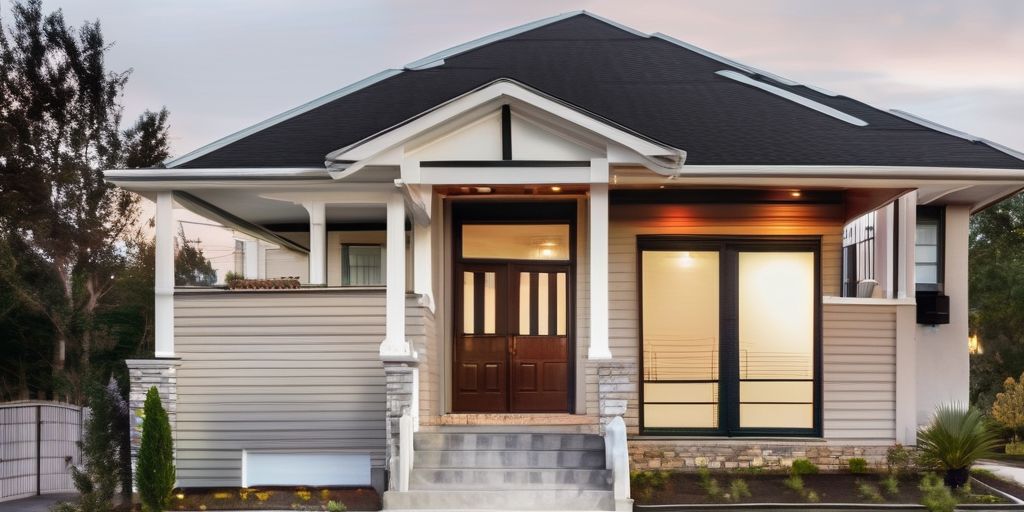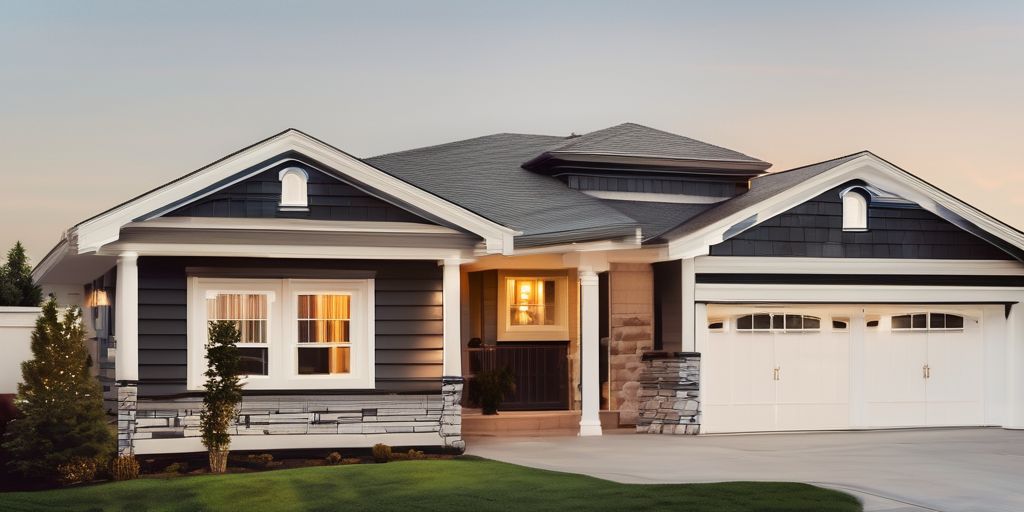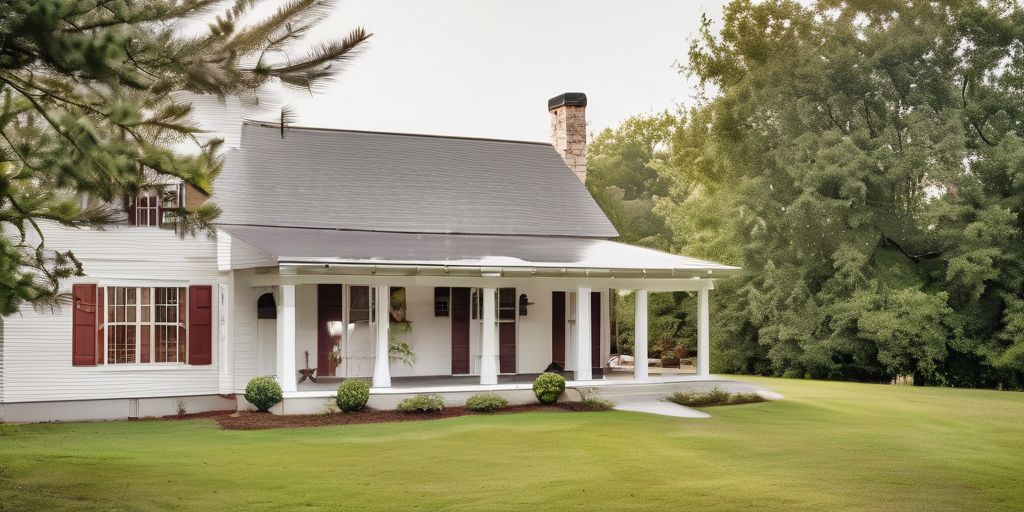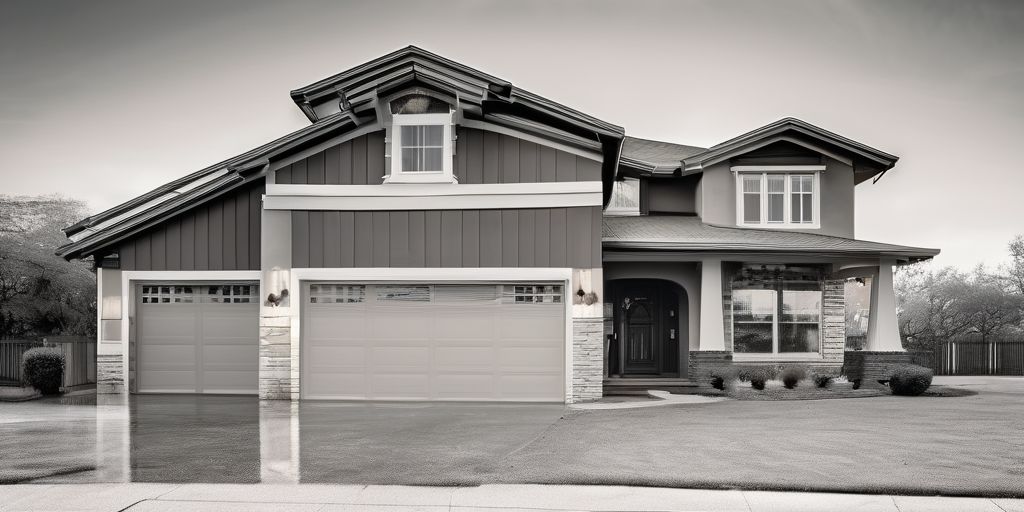Spray painting doors can transform the look of your home, giving it a fresh and polished appearance. In Cambridge, achieving a sleek finish involves careful preparation, the right materials, and skilled techniques. This guide will help you navigate the steps to get the best results when spray painting your doors.
Key Takeaways
- Thoroughly clean and sand the door before painting.
- Choose the right finish and color for a stylish look.
- Use quality primer and paint for a long-lasting result.
- Keep a steady distance while spraying to ensure even coverage.
- Allow enough drying time between coats for the best finish.
Preparing Your Door for a Sleek Finish
Achieving a sleek finish starts with proper preparation. Taking the time to prepare your door can make all the difference in the final result. Here are the essential steps:
Cleaning and Sanding Techniques
- Remove Dust: Start by getting rid of any dust or cobwebs. A vacuum with a long attachment or a microfiber cloth works well.
- Wash the Surface: Use a gentle cleaning solution and a soft cloth to wash the door. Avoid harsh chemicals that might damage it.
- Rinse Thoroughly: After washing, rinse the door with clean water to eliminate any soap residue.
- Dry Completely: Ensure the door is completely dry before moving on to sanding.
- Sand the Door: Use medium-grit sandpaper first, then switch to fine-grit for a smooth finish. Always sand along the wood grain to avoid scratches.
Patience and attention to detail at this stage can set the foundation for a sleek finish.
Repairing Damaged Areas
- Fill Holes and Cracks: Use wood filler to repair any damage. Allow it to dry before sanding.
- Sand the Repaired Areas: Once dry, sand these areas to ensure they are smooth and even with the rest of the door.
Applying Primer for Better Adhesion
- Choose the Right Primer: Select a primer suitable for your door material.
- Apply Evenly: Use a spray gun or brush to apply a thin, even coat of primer.
- Allow to Dry: Let the primer dry completely, which may take several hours.
Remember, a well-prepared surface is key to achieving a beautiful finish.
Choosing the Right Spray Paint for Doors
When it comes to spray painting doors, selecting the right paint is essential for achieving a sleek finish. Here are some key factors to consider:
Selecting the Finish
- Matte finishes can hide imperfections but may not be as durable.
- Semi-gloss and gloss finishes are easier to clean and withstand wear, making them great for high-traffic areas.
- Satin finishes offer a balance, providing a low sheen that’s easy to maintain.
Remember, the finish you choose will affect the overall look and longevity of your paint job.
Considering the Color
- The color should complement the existing decor and architecture of your property.
- Lighter colors can make a space feel more open, while darker colors add sophistication.
- Neutral colors are versatile and appeal to a wider audience, making them a safe choice for resale.
- Bold colors can personalize a space but may not suit everyone’s taste.
In Cambridge, a color that reflects the local architecture can enhance your door’s appeal, especially near landmarks like the Cambridge University Botanic Garden.
Quality of the Paint
- Choose high-quality paint for exterior surfaces to ensure longevity and resistance to weathering.
- The paint should be suitable for the door’s material and the typical climate in your area.
- Testing paint colors in different lighting conditions is crucial to ensure the desired effect throughout the day.
Using quality paint is vital for achieving a finish that not only looks professional but also withstands the test of time. Acrylic paint is widely considered the best choice for exterior applications due to its durability and color retention.
By considering these factors, you can ensure that your spray painting project results in a beautiful and lasting finish for your doors.
Mastering Spray Painting Techniques
Achieving a sleek finish when spray painting doors requires skill and attention to detail. Here are some essential techniques to help you master the process:
Maintaining Proper Distance
- Keep the spray nozzle about 6 to 8 inches away from the door surface. This distance helps ensure even coverage.
- Adjust your distance based on the type of paint and the pressure of the spray.
- Practice on a scrap piece of material to get comfortable with the spray pattern.
Consistency is key. Regularly check your distance as you move along the door to ensure a uniform finish.
Using Even Strokes
To achieve a professional look, using even strokes is crucial. Here are some tips:
- Start with the spray nozzle at a consistent distance from the door.
- Move the nozzle at a steady pace to avoid drips and uneven coverage.
- Overlap each stroke slightly with the previous one to prevent missed spots.
Remember, patience is key. Rushing can lead to a less than satisfactory finish.
Practicing on Scrap Material
Before you start on your door, take some time to practice:
- Use a piece of scrap material similar to your door.
- Experiment with different distances and speeds.
- Observe how the paint behaves and adjust your technique accordingly.
By mastering these techniques, you can ensure a sleek finish that enhances the beauty of your door, much like the stunning architecture found in the Cambridge area. A little practice goes a long way!
Ensuring a Durable Finish
To achieve a long-lasting and attractive finish on your doors, it’s important to follow a few key steps. Proper care during the painting process can significantly enhance durability. Here’s how to ensure your paint job stands the test of time:
Allowing Sufficient Drying Time
- Follow the manufacturer’s instructions for drying times between coats.
- Avoid touching or using the door until it’s fully cured to prevent smudges.
- Consider the weather; humidity and temperature can affect drying times.
Applying Multiple Coats
- Apply at least two to three thin coats of paint for better coverage.
- Allow each coat to dry completely before applying the next.
- This method helps in achieving a smoother finish and increases durability.
Protecting Against Weather Conditions
- If your door is exposed to the elements, consider using a weather-resistant topcoat.
- Regularly inspect the door for signs of wear or damage, especially after storms.
- In areas like Cambridge, where weather can be unpredictable, this step is crucial.
Remember, taking the time to ensure proper drying and applying multiple coats can make a big difference in the longevity of your paint job.
By following these guidelines, you can enjoy a beautiful and durable finish on your doors for years to come!
Troubleshooting Common Spray Painting Issues
Spray painting can sometimes lead to unexpected problems. Here are some common issues and how to fix them:
Dealing with Drips and Sags
- Inspect the surface: Check for any moisture or uneven areas that might cause paint to run. If you notice bubbling, it’s essential to address the source of moisture first.
- Adjust your technique: Maintain a consistent distance of about 6 to 8 inches from the surface to avoid drips.
- Sand and repaint: If drips occur, allow the paint to dry, then lightly sand the area before applying another coat.
Fixing Uneven Coverage
- Allow drying time: After the first coat, let it dry completely. If you see uneven spots, lightly sand the surface to smooth it out.
- Reapply paint: Use even strokes and overlap each pass slightly to ensure full coverage. This helps prevent missed spots.
- Check your equipment: Sometimes, uneven coverage can be due to a clogged nozzle. Clean it thoroughly before continuing.
Addressing Overspray Problems
- Use drop cloths: Protect surrounding areas with drop cloths to catch any overspray.
- Control the spray: Keep the nozzle moving to avoid concentrating paint in one area, which can lead to overspray.
- Clean up quickly: If overspray occurs, clean it up while it’s still wet to avoid permanent marks.
Remember, patience and attention to detail can make a significant difference in achieving a sleek finish. Taking the time to troubleshoot these common issues will lead to a more satisfying result in your spray painting project.
Eco-Friendly Spray Painting Practices
When it comes to spray painting, being kind to the environment is more important than ever. Here are some practices to consider:
Choosing Sustainable Paints
- Low or zero VOC (Volatile Organic Compounds) paints help improve air quality.
- Look for paints made with natural pigments and binders that are less harmful to the environment.
- Sustainable paints often last longer, reducing the need for frequent repaints.
Minimizing Waste
- Use only the amount of paint you need to avoid excess waste.
- Recycle any leftover materials, including paint cans and brushes.
- Consider using drop cloths and other protective gear to keep your workspace clean and reduce cleanup waste.
Safe Disposal of Materials
- Dispose of paint and other materials according to local regulations to prevent environmental harm.
- Many communities have special collection days for hazardous waste, including paint.
- Always check for eco-friendly disposal options in your area, especially in places like Cambridge, where sustainability is a community focus.
By adopting eco-friendly practices, you not only help the planet but also ensure a long-lasting finish that can withstand the test of time.
Incorporating these practices into your spray painting projects can lead to a cleaner, greener environment while maintaining the beauty of your home or business.
If you’re looking to refresh your home while being kind to the environment, consider eco-friendly spray painting! This method not only enhances your home’s appearance but also uses less harmful materials. Visit our website to learn more about how we can help you transform your space sustainably!
Frequently Asked Questions
How long does it take for spray-painted doors to dry completely?
Spray-painted doors usually need about 24 hours to dry fully. This can change depending on the paint and the weather.
Can I spray paint doors when it’s cold outside?
It’s not a good idea to spray paint doors in cold weather. Try to paint when it’s above 50°F for the best results.
Should I sand the doors before spray painting?
Yes, sanding is important! It makes the surface smooth so the paint sticks better.
What’s the best way to clean doors before spray painting?
Use a mix of mild soap and water to clean the doors. This will get rid of dirt and grease, helping the paint stick.
Can I use any spray paint on doors?
No, you should pick a spray paint made for doors and the type of material your doors are made of.
What should I do if I see drips after painting?
If you notice drips, wait for the paint to dry completely, then lightly sand the area and apply another coat to fix it.

